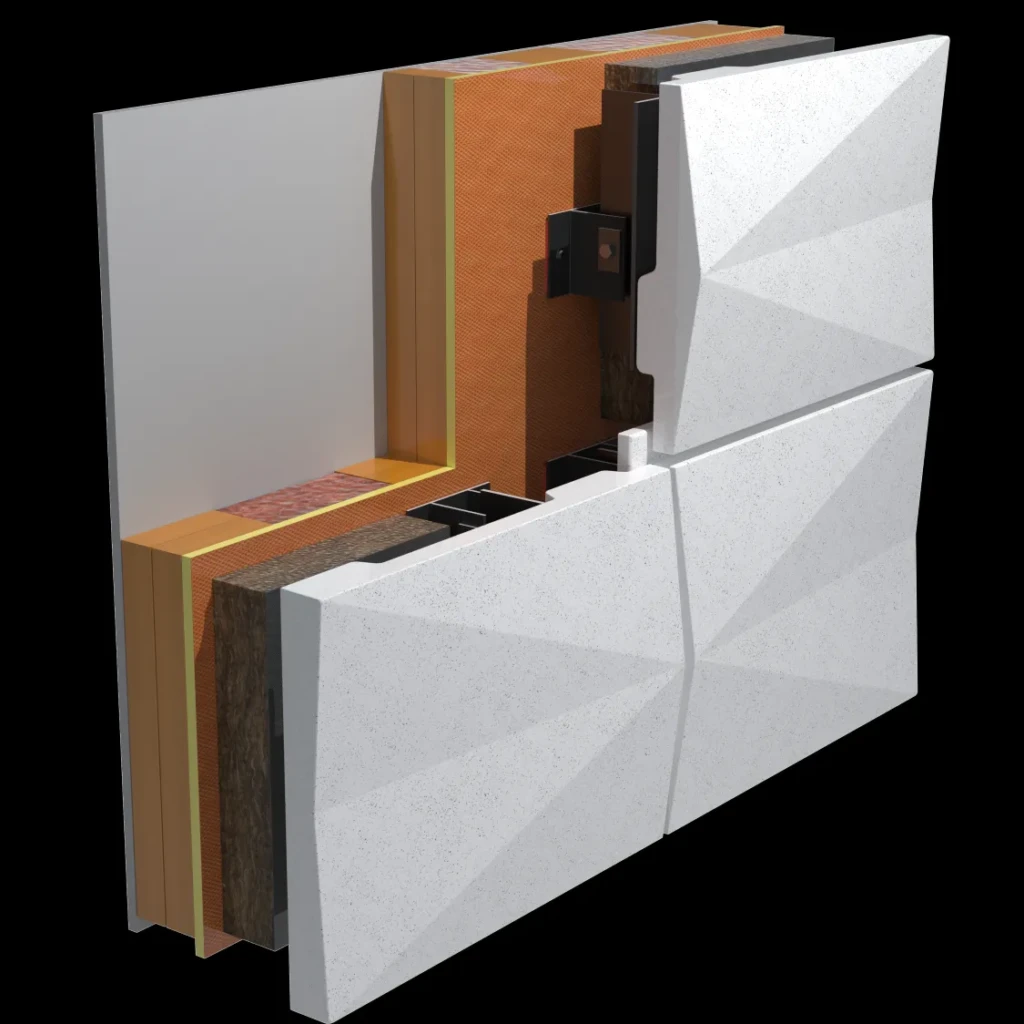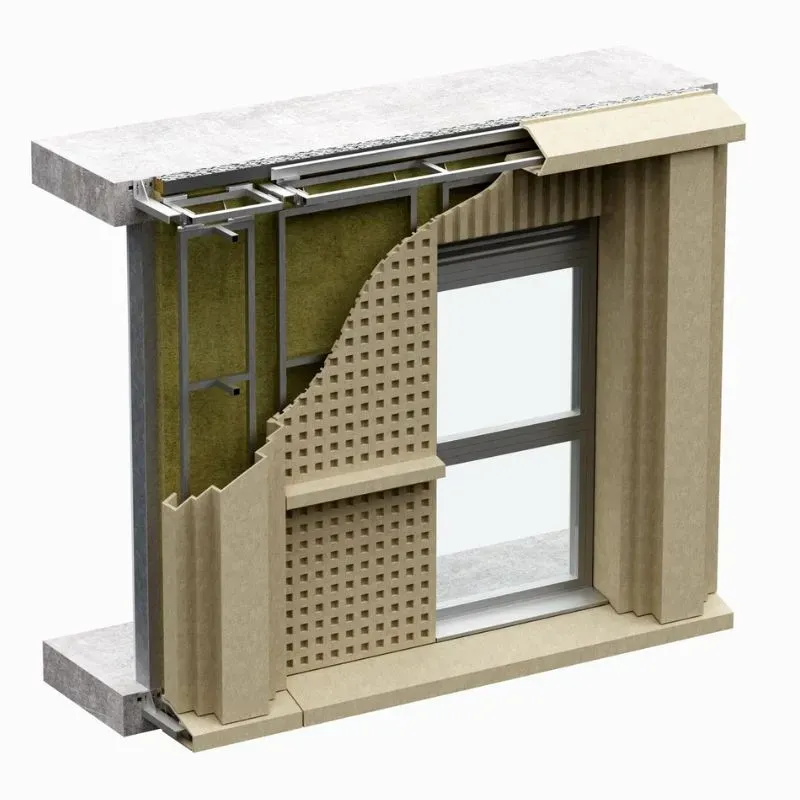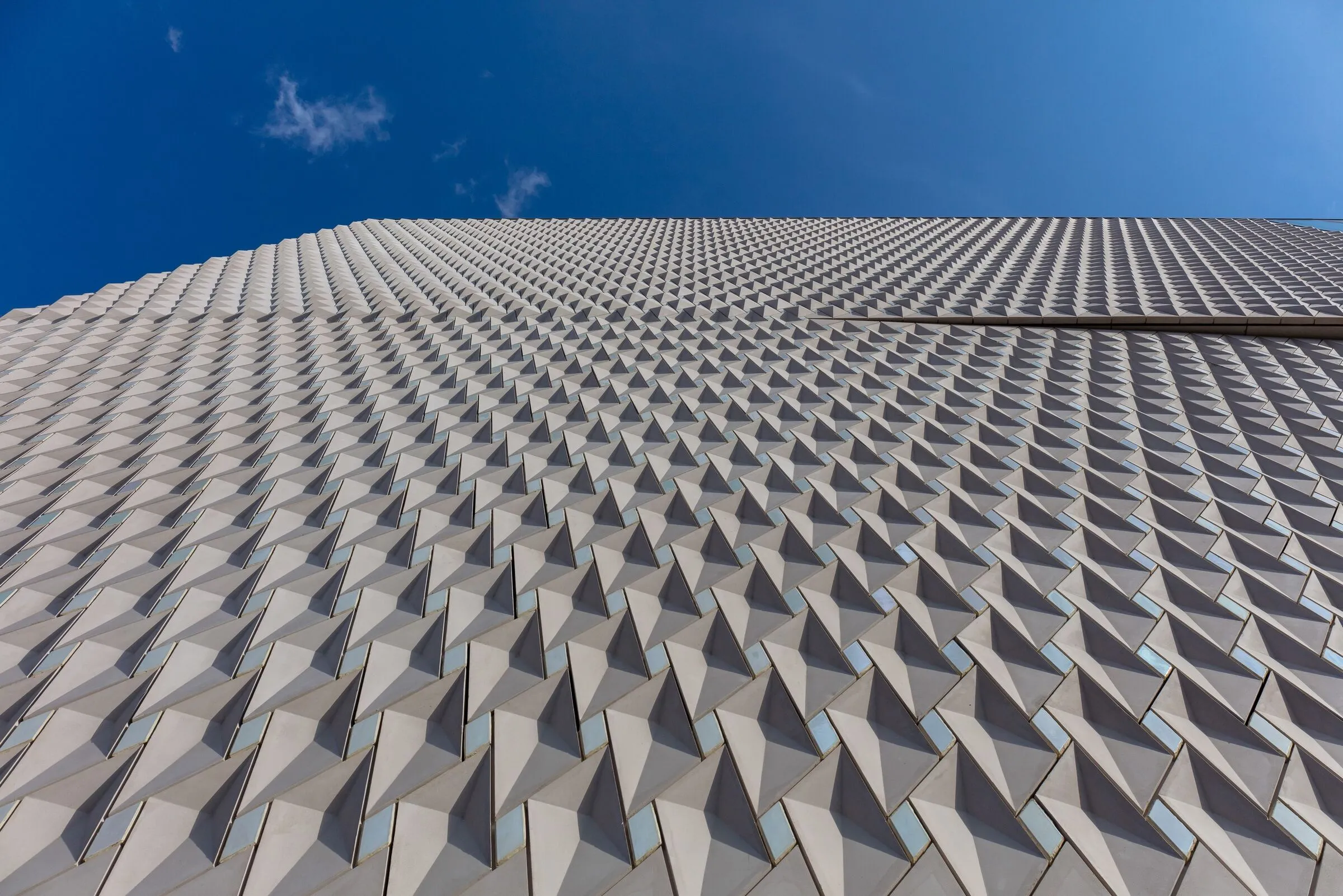In contemporary architecture, a building’s functional performance is just as important as its visual appeal. Among the key factors that directly affect energy efficiency and occupant comfort are thermal insulation and sound insulation. This is where Glassfibre Reinforced Concrete (GRC) stands out—not just for its aesthetics, but for its ability to deliver integrated architectural and environmental performance.
In this in-depth technical article, we explore how GRC contributes to enhanced thermal and acoustic performance in buildings through its physical properties, design applications, and role in promoting sustainability and energy savings.
1. Introduction to GRC
GRC (Glassfibre Reinforced Concrete) is a high-performance composite that replaces traditional steel reinforcement with alkali-resistant glass fibers. It offers low density, superior flexibility, and excellent durability.
Key Physical Properties of GRC:
- Density: 1600–2000 kg/m³
- High tensile strength due to glass fiber reinforcement
- Strong resistance to weathering and climate extremes
- Easily moldable into any architectural form

2. Thermal Insulation in GRC Applications
1. Understanding Thermal Insulation
Thermal insulation refers to a material’s ability to limit heat transfer between the interior and exterior environments. The lower the thermal conductivity (λ), the better the insulation.
2. How GRC Performs Thermally
GRC alone is not a high-performance insulator, but when combined with modern insulation systems, it delivers excellent thermal performance.
3. Integration Techniques:
A. Sandwich Panel System
Composed of an outer GRC skin, a core insulating layer (e.g., polyurethane or rock wool), and an internal structural panel.
Result: Reduced thermal load and improved building envelope U-value.
B. Ventilated Perforated GRC Panels
Used in contemporary projects to provide shading and natural air circulation.
Result: Passive cooling and reduced heat absorption.
4. Key Benefits:
- Up to 40% reduction in HVAC energy usage
- More consistent indoor temperatures
- Enhanced user comfort
5. Case Study:
A government project in the Gulf region implemented GRC double-skin façades.
Result: 35% decrease in electricity bills in the first year alone.
3. Acoustic Insulation in GRC Applications
1. Understanding Acoustic Insulation
Acoustic insulation is the ability of a material to block sound transmission between spaces. It is measured using the Sound Transmission Class (STC).
2. GRC’s Noise Reduction Capabilities
Due to its relatively low density, GRC alone doesn’t fully block sound but can deliver high acoustic performance when used in layered systems.
3. Acoustic Systems with GRC:
A. GRC Panels with Soundproof Layers
Combining GRC with materials like polyethylene foam or fiberglass wool.
Applications: Theaters, hospitals, and hotels.
B. Sound-Absorbing Surface Designs
Perforated or textured GRC façades help scatter and absorb sound waves.
4. Performance Testing:
STC ratings of 45 dB or higher have been recorded in GRC double-wall systems with integrated insulation.
5. Case Example:
At a cultural center in Europe, perforated GRC panels reduced outdoor noise levels by 50%—without compromising design aesthetics.

4. Material Comparison: Thermal & Acoustic Performance
| Material | Thermal Conductivity (W/mK) | Acoustic Insulation (STC) |
| GRC with insulation | 0.25–0.35 | 45–55 dB |
| Traditional Concrete | 1.4–1.75 | 50–60 dB |
| Aluminum | 205 | Very Poor |
| Treated Wood | 0.12–0.16 | 35–45 dB |
5. How GRC Design Improves Performance
- Wall Thickness Optimization: Increasing panel thickness enhances thermal and acoustic resistance
- Surface Treatment: Uneven or perforated surfaces reduce sound reflection
- Air Gaps: Layering with air gaps between GRC and insulation material boosts efficiency
6. Sustainability and Indoor Comfort
- Lower Carbon Footprint: Insulated GRC reduces HVAC demand
- Improved Air Quality: Less temperature fluctuation = reduced condensation and mold
- Enhanced Occupant Wellbeing: Quieter, more temperate spaces improve productivity and comfort
7. Recommendations for Architects and Developers
- Combine GRC with high-performance insulation for maximum efficiency
- Test thermal and acoustic prototypes before mass production
- Focus on integrated design strategies that prioritize both form and function
- Consult environmental physicists when specifying insulation compositions
- Choose trusted GRC suppliers with proven performance records
8. UAC GRC’s Role in Effective Insulation Systems
At UAC GRC, we prioritize both form and function in our architectural solutions. Our services include:
- Technical consulting for thermal and acoustic façade analysis
- Integrated GRC systems with dual insulation layers
- Precision manufacturing and full documentation for each component
- Certified performance testing for heat and sound transmission
Conclusion
GRC architectural elements offer the perfect solution for projects that demand a balance between aesthetics, durability, and environmental performance. Thanks to ongoing advancements in design and production, GRC can now be used to enhance thermal and acoustic insulation, reduce energy consumption, improve comfort, and elevate long-term property value.
Need integrated insulation and design solutions?
Contact UAC GRC for expert consultation on your next project.


